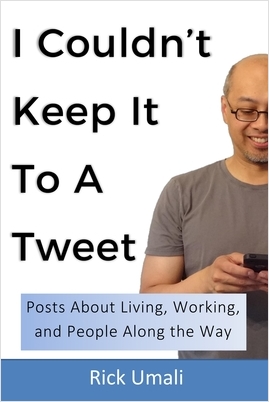I grew up eating food with a spoon and fork. I'd wield the spoon in the right hand, and the fork in the left hand. A spoon is the exact right utensil for shoveling mounds of food into my mouth. Plus I could use it to measure out soy sauce, which I applied liberally to all the white rice I ate. The edge of the spoon could cut into soft foods, and so the spoon was ready substitute for a knife.
I was probably in middle school when I realized that not everyone ate this way. I'd go over to someone's house, or visit a restaurant, and the place setting featured a knife and a fork. Huh? I remember asking for spoons back then, even at restaurants!
No one made me feel bad about my eating habits, but I knew I was different. I gradually learned that the knife and the fork were the American standard. I began to assimilate. I had to learn the interesting switch of moving the knife to the right hand (my dominant hand) in order to cut with it. I also learned that you shouldn't pile food on your knife, using it as a makeshift spoon.
Different cultures eat food differently: some use chopsticks, some use their hands, and some use a knife and fork to pizza. Some cultures are liberal with spices, some eat fast, some eat slow, and some drink soda before noon. I went with the mantra: "When in Rome, do as the Romans."
One night eating alone at home, I decided to try out the spoon and a
fork. It had been many years since I ate this way. As I dug into the food, it felt weird eating "old school" style. I've changed, I thought. And that's not a bad thing.
In the United States, you can exercise your culture. Because of our differences, you also
get to see and learn new ways of doing things.
Individuality. Observation. Participation. It's how our melting pot is seasoned, simmered,
and stirred.
Wednesday, November 30, 2016
Subscribe to:
Posts (Atom)

